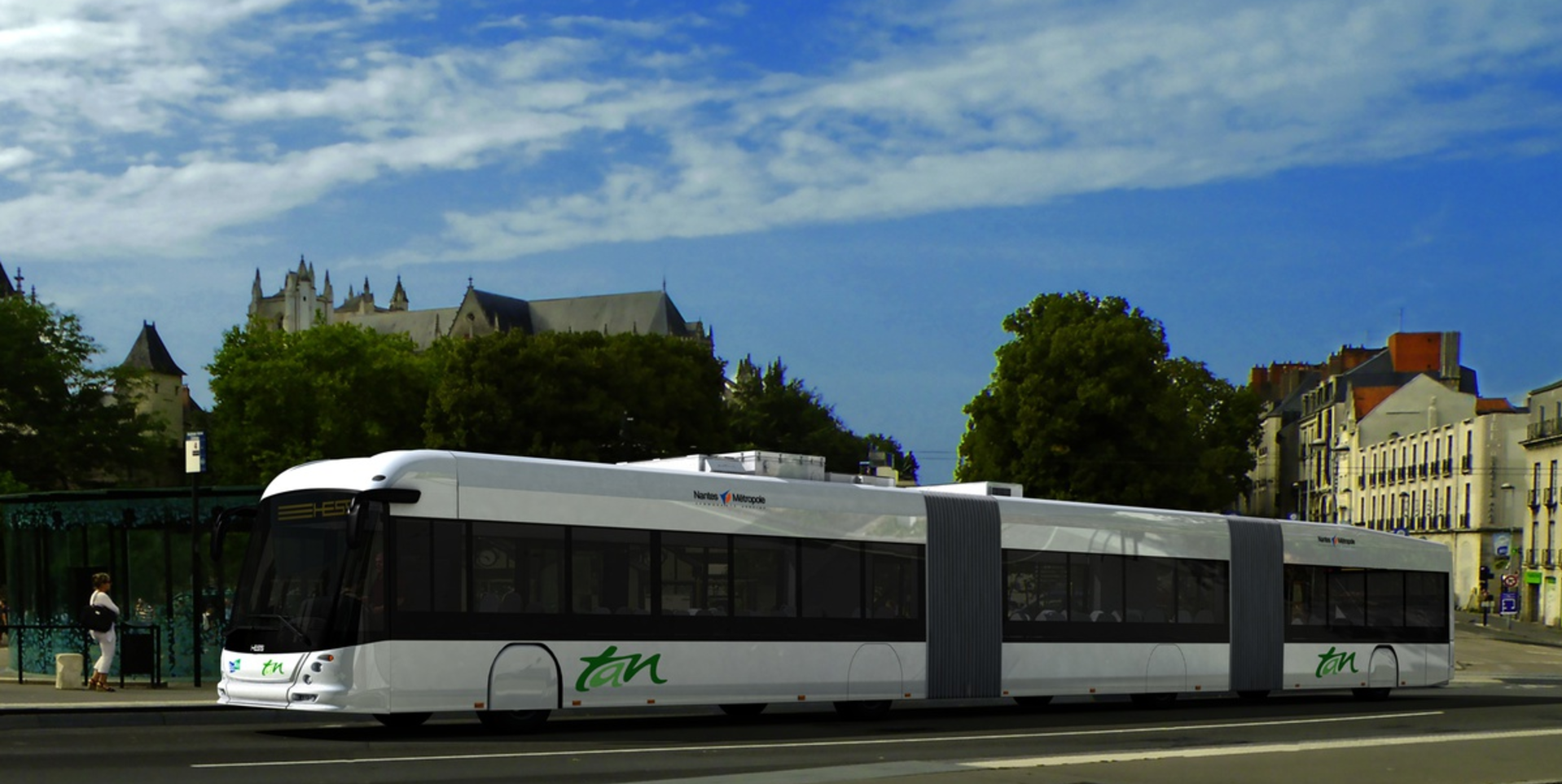24m full electric bus
An emblematic action in the mySMARTLife project is the replacement of the current Busway line (BHLS) fleet with 22 fully electric buses carried out by Semitan and Nantes Metropole. This action took place on a heavily frequented bus rapid transit line which has reached its limits (43 000 passengers/day) with high frequency (one bus every 2,5 minutes at peak hours).
Analysis will be done on the impact of a large capacity electric bus (24 m, 150 passengers, up to 55 000 passengers/day) on the grid and on the reduction of energy use, noise and pollutants.
Twelve charging stations have been installed for the e-buses, as strong impact is expected on the grid. To alleviate it, charging stations located at certain stops along the line and at the bus terminus will allow energy transfer from the electrical network to the batteries of the vehicles. The energy transfer between the vehicle and the charging stations is carried out by an articulated arm located on the roof of the bus with a smart energy management system of "opportunity charging" (called TOSA). The bus equipped with the system recharges quickly on the passenger exchange time at a bus station (2 seconds for connection, about 20 seconds for charging) and at the terminus (a few minutes) with a power of 600 Kva.

Electric mobility for cars and bikes
For e-cars, over 100 smart charging stations will be installed in Nantes Metropole car parks until the end of 2020 and connected to Nantes urban platform. By 2020, around 1,800 e-bikes will be available for long-term rental and 200 electric plugs will be installed in bike lockers and bike parking.
A standard for data exchange has been chosen (OPCI). Nantes Metropole has worked with companies managing charging stations to ensure that the data transmission systems are compatible with the chosen interoperable data exchange protocol.
Electric autonomous shuttle and solar road
An autonomous shuttle bus was experimented in an industrial zone in real traffic (trucks, cars, bikes) including roundabouts and traffic lights. The combination of different innovative technologies makes it an unique project based on three autonomies: driving autonomy (shuttle without driver, but with the presence of a supervisor on board); energy autonomy (a photovoltaic road produces as much energy as the shuttle consumes); autonomy in environmental management and detection (the shuttle dialogues with road equipment and equipment, counts automatically the number of passengers boarding the shuttle and detect automatically passengers at bus stops).
The shuttle is 100% electric and runs on rechargeable batteries by direct power supply. Its high-performance guidance systems use several technologies simultaneously (lidar, stereovision camera, GNSS base, odometry, etc.). Major technological innovations, the photovoltaic panels installed are characterized by their thinness, flexibility, simplicity of installation and removal, and optimized cost. Specially designed for this project, the prototype, placed on the ground on 34 m², allowed to produce enough electricity to compensate the shuttle's consumption.
Have a look at our public deliverables D2.13 and D2.14 to find out more.

